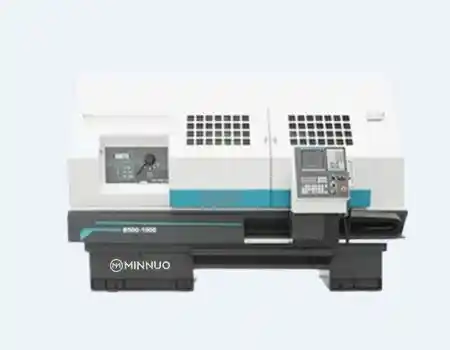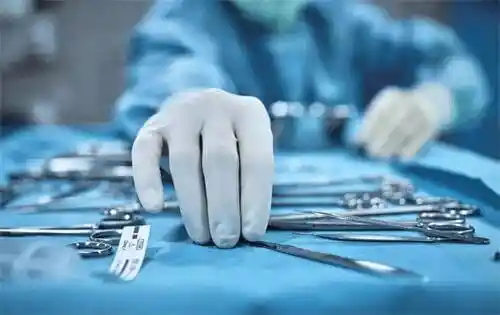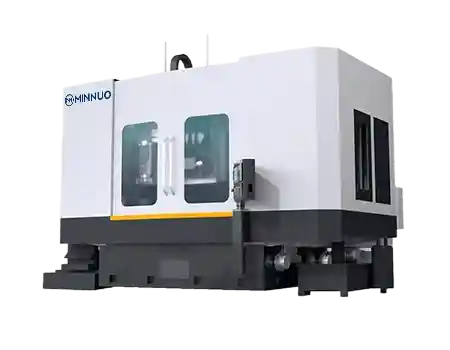What is CNC: A Beginner’s Guide
Traditional manual machining is often inefficient and prone to errors. In contrast, CNC (Computer Numerical Control) machine tools offer enhanced productivity, improved machining accuracy, and enable the mass production of complex parts, transforming the manufacturing industry. In this article, we will explore the fundamentals of CNC and its far-reaching impact on modern manufacturing.
CNC (Computer Numerical Control) uses computer programs to control machine tools, offering greater precision, speed, and consistency than manual controls. It improves production efficiency, reduces human error, and ensures high-quality, reliable parts with repeatable precision.
Curious about how CNC technology is reshaping modern manufacturing? Dive into the fundamentals of CNC, explore its key applications, and uncover the emerging trends shaping its future. Read on to gain a thorough insight into this essential technology!
I.The History of CNC
CNC technology has its roots in the mid-20th century, with significant contributions from the U.S. Air Force. In 1952, MIT researchers invented the first numerical control machine tool, laying the foundation for CNC technology. Over time, advancements in computer technology and increasing manufacturing demands accelerated CNC’s development, leading to its widespread adoption in industries worldwide.

II.What Is CNC Machining?
CNC machining refers to a broad range of machining operations performed using CNC technology. These processes include turning, milling, drilling, grinding, laser cutting, and electrical discharge machining (EDM). CNC machining improves precision, reduces errors, and enhances productivity across a variety of manufacturing applications.
Key CNC Machining Operations:
-Turning: The workpiece rotates while a cutting tool shapes it, producing high-precision cylindrical, conical, and complex curved parts.
-Milling: Uses rotating cutting tools to shape a stationary workpiece. CNC milling machines create intricate flat surfaces, gears, slots, and 3D shapes.
-Drilling: Involves a rotating drill bit to create holes in the workpiece with high accuracy in positioning and depth.
-Grinding: Utilizes a high-speed abrasive wheel for precise finishing, ideal for high-precision components.
-Laser Cutting: Uses a high-energy laser beam for fast and precise cutting or engraving of materials.
-EDM: Machines conductive materials by using electrical discharges, often employed for complex molds or tough alloys.
Each CNC operation involves programming tool paths and machining parameters into the control system, which then directs the machine tools to carry out the operations.
III.What Are CNC Machines?
CNC machines are automated tools controlled by computer programs that perform machining tasks automatically. Some common types of CNC machines include:
CNC Lathes: For turning operations to shape parts.
CNC Mills: For milling complex shapes and parts.
CNC Grinders: For precision surface finishing.
CNC EDM Machines: For electrical discharge machining, ideal for high-hardness materials.

These machines dramatically enhance precision, reduce errors, and can run continuously, improving manufacturing throughput.
IV.What Is a CNC Machinist?
A CNC machinist is a professional skilled in operating and maintaining CNC machines. They program CNC machines, set up workpieces, and ensure that machines perform efficiently and accurately. CNC machinists are crucial for ensuring high-quality production in industries ranging from automotive to aerospace.
V.How Does CNC Work?
The operation of CNC machines relies on several key components:
• Controller: The computer system that reads and interprets programming instructions.
• Servo System: Controls the motion of the machine tool based on the instructions.
• Drive Unit: Powers the movement of the machine tool.
• Machine Tool Body: The physical part of the machine where the workpiece is held and shaped.
The CNC system ensures that each part of the machine follows the programmed paths and speeds precisely, resulting in accurate and repeatable machining.
VI.Why Is CNC Machining Important?
CNC machining is crucial in modern manufacturing because it:
• Improves efficiency by reducing human error and manual labor.
• Increases precision, enabling the production of complex and high-accuracy parts.
• Enhances product quality with consistent output and fewer defects.
• Meets high demand by allowing for rapid mass production of parts.
VII.Why Are CNC Machine Tools So Efficient?
CNC machines are highly efficient due to:
Automation: CNC machines can run continuously without human intervention, reducing labor costs.
Multi-axis capabilities: These allow for simultaneous operations, reducing the machining cycle time.
Precision and consistency: CNC systems follow pre-programmed paths with minimal variation, ensuring that every part produced is identical.
VIII.Major Applications of CNC Technology
CNC technology is essential in a wide range of industries. Here are some key applications:
Manufacturing: CNC is used in industries such as automotive, aerospace, electronics, and household appliances. For example, CNC machines create engine parts, transmission components, and complex aircraft structures.
Medical Devices: CNC machining is used to produce highly precise medical instruments and implants, such as artificial joints and heart stents, ensuring high standards of safety and quality.
Aerospace: CNC machines manufacture high-precision parts for aircraft and spacecraft, meeting stringent requirements for strength, weight, and accuracy.
Automotive Industry: From engines to body parts, CNC machining allows for efficient mass production and precise components that improve vehicle performance.
Electronics: In electronics manufacturing, CNC machines create precise phone cases, computer components, and circuit boards, meeting the demanding specifications for small, intricate parts.
Mold Making: CNC is widely used for creating complex molds with high precision, directly impacting product quality and production speed.

IX.What Can CNC Machines Do?
CNC machines are versatile and capable of performing various tasks, including turning, milling, drilling, and grinding. They can create complex shapes and high-precision components, producing parts quickly for mass production or slowly for custom manufacturing. Whether making large quantities or individual parts, CNC machines excel in both efficiency and precision.
X.Advantages and Disadvantages of CNC
Advantages:
High Precision: CNC machines offer precise machining within microns, ideal for critical components.
Efficiency: CNC machines can operate 24/7 with minimal human intervention.
Consistency: Every part produced is identical, ensuring high-quality products.
Flexibility: CNC machines can produce a wide range of parts and products, from custom designs to mass production.
Disadvantages:
High Initial Cost: CNC machines and associated software can be expensive.
Complex Maintenance: Regular maintenance and skilled technicians are required to keep CNC machines running efficiently.
Environmental Sensitivity: CNC machines are sensitive to environmental factors such as dust, temperature, and humidity, which can affect their performance.
XI.Future Trends in CNC
CNC technology is continuously evolving:
Smart Manufacturing: In the era of Industry 4.0, CNC machines will be connected to the internet and leverage big data and AI to optimize performance.
Sustainability: The future of CNC will focus on eco-friendly manufacturing and sustainable practices.
Advanced Materials: As materials evolve, CNC technology will adapt to handle new, high-performance materials with precision.
Conclusion
CNC is transforming the way parts and products are made. It combines precision, efficiency, and flexibility to support industries ranging from aerospace to automotive and medical devices. As technology advances, CNC will continue to play a pivotal role in the future of manufacturing, driving innovation, improving product quality, and enabling sustainable production.
Frequently Asked Questions (FAQ)
What are the main parts of a CNC machine?
The main parts are the controller, servo system, drives, and machine tool body.
What kind of programming languages are used for CNC?
The most common languages are G-code and M-code, which are used to control machining operations.
What are the most common types of CNC machines?
Common CNC machines include CNC lathes, CNC mills, CNC grinders, and CNC EDM machines.




 Email
Email sales1: +86 13295238763
sales1: +86 13295238763

